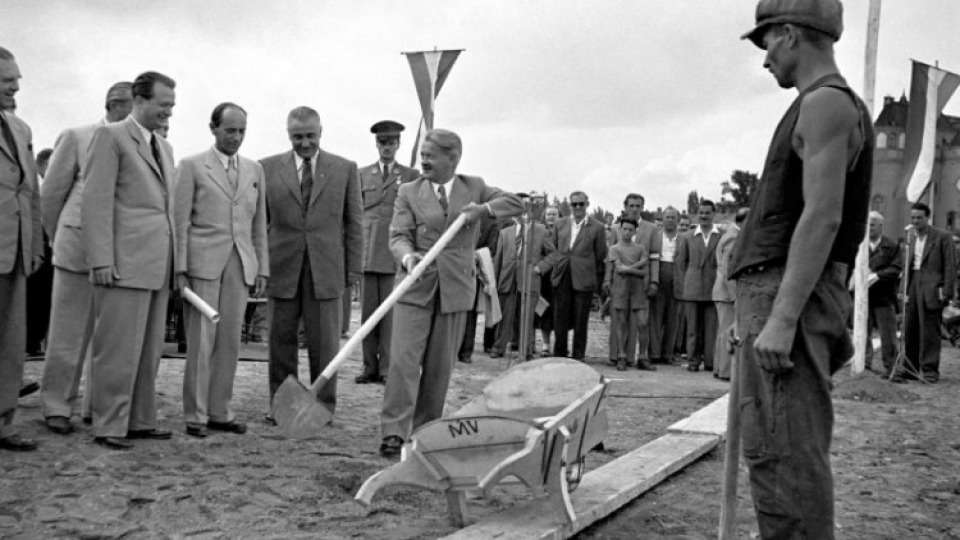Budapest’s Puskás Aréna combines past with present
The new Puskás Arena preserves the memory of its predecessor the Népstadion in its external tribune pylons as well as the concrete used for its construction. The anniversary of the beginning of the Népstadion’s construction also coincides with another important date, the EURO 2020 final.
The best two national teams in Europe will lock horns in the EURO 2020 final at Wembley Stadium in London on 12 July next year, seventy-two years to the day after construction of the Népstadion.
According to the book Volt egyszer egy Népstadion (There once was a Népstadion), the first stone of what would become the home of Hungarian football from 1953 until 2014 was laid by OTSB (National Physical Education and Sports Committee) President Gyula Hegyi in the presence of President Zoltán Tildy at 5pm on Monday 12 July 1948. The 27-hectare site was where the old horseracing course had stood, the land previously being used as a rubbish site and then a sand mine.

Gábor Sinkovics and János Tóth’s work commemorates that the sports stars of the day – such as Olympic champion boxer László Papp and – joined in with the simple workers to help build the arena. Ferenc Puskás, after whom the Népstadion was name in 2002, also chipped in, along with other top-flight footballers, as did many enthusiastic volunteers. It took 150,000 man-hours to construct the Népstadion, using 1,330,000 bricks. The capacity had originally been planned to be 100,000 but was in the end slightly under.
It took 1,860 construction workers 5 years to build the Népstadion, which was opened on 20 August 1953.
https://www.youtube.com/watch?v=oI0nbGeNENc
Alongside football and sporting events it was also the venue for numerous concerts over the years, Louis Armstrong, Queen, AC/DC, Guns N’ Roses and the Rolling Stones being just a few of the acts to perform there.
By contrast, 200 engineers, along with a daily workforce of 1,000 have been working on the construction of the new Puskás Aréna, which will open on 15 November this year as Hungary take on Uruguay in a friendly match that will also serve as a farewell match for Zoltán Gera. The steel structure of the new arena weighs 10,000 tons, the same as two Elizabeth Bridges across the Danube. 26 kilometres of drilled posts have been used in the construction, which, if placed horizontally together, would reach all the way to Százhalombatta.
The 1,700 kilometres of cables, meanwhile, would reach further than London or Barcelona. The capacity of the new Puskás Aréna will be just shy of 68,000.





